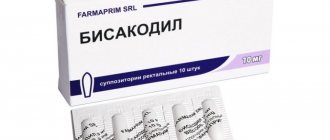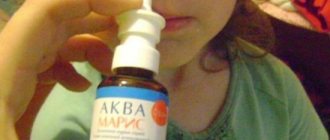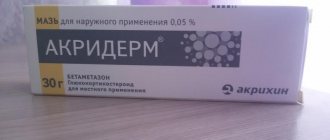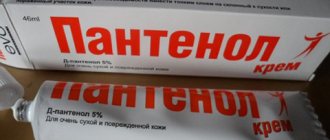Xylometazoline overdose symptoms
— 1 ml contains: xylometazoline hydrochloride 500 mcg.
Excipients: benzalkonium chloride 150 mcg/ml, disodium edetate dihydrate 500 mcg/ml, potassium dihydrogen phosphate 3.63 mg/ml, sodium hydrogen phosphate dodecahydrate 7.13 mg/ml, sodium chloride 7 mg/ml, eucalyptus oil 500 mcg/ml, sorbitol 8 mg /ml, glycerol 4 mg/ml, macrogol glyceryl hydroxystearate 3.4 mg/ml, purified water to 1 ml.
https://www..com/watch?v=ytdeven-GB
— 1 ml contains: xylometazoline hydrochloride 1 mg.
In 1 ml drops of 0.05% and 0.1% xylometazoline 500 mcg and 1 mg, respectively. Sodium hydrogen phosphate, potassium dihydrogen phosphate, sodium chloride, benzalkonium chloride as auxiliary components.
In 1 ml of spray there are 0.05% and 0.1% xylometazoline 500 mcg and 1 mg, respectively. Sodium hydrogen phosphate, benzalkonium chloride, disodium edetate dihydrate, potassium dihydrogen phosphate, eucalyptus oil, sodium chloride, macrogol glyceryl hydroxystearate, sorbitol, glycerin, water as auxiliary components.
1 g of xylometazoline gel contains 1 mg. Carbomer, glycerol, ammonia solution, propylene glycol ethanol, methylparaben, propylparaben, water as auxiliary components.
Pharmacodynamics and pharmacokinetics
Pharmacodynamics
Xylometazoline is an imidazoline derivative. Stimulates α1 and 2-adrenergic receptors of the blood vessels of the nasopharyngeal mucosa. As a result, blood vessels narrow, hyperemia, swelling of the mucous membrane and nasal discharge decrease. As a result, it is easier to breathe through the nose during rhinitis, allergic conditions and diseases of the paranasal sinuses.
Pharmacokinetics
The pharmacokinetics of the drug have not been studied in humans. Sometimes, when applied topically, absorption is sufficient to produce systemic effects.
When applied topically, xylometazoline is practically not absorbed, so its concentrations in blood plasma are very low (not determined by modern analytical methods).
Indications for use
- rhinitis of various etiologies (allergic, viral, traumatic, bacterial);
- rhinopharyngitis;
- otitis media and eustachitis;
- to facilitate the discharge of secretions during sinusitis;
- to facilitate diagnostic manipulations in the nasal passages.
Use with caution during pregnancy. In pediatrics, the drug with a concentration of 0.1% is not used.
Indications for use of the spray
https://www..com/watch?v=ytcreatorsen-GB
are: acute respiratory diseases with symptoms of rhinitis (runny nose); acute allergic rhinitis, sinusitis, hay fever; otitis media (as part of combination therapy to reduce swelling of the nasopharyngeal mucosa); preparing the patient for diagnostic procedures (rhinoscopy).
Contraindications to the use of the drug
are: hypersensitivity to the components of the drug, arterial hypertension, tachycardia, severe atherosclerosis, glaucoma, atrophic rhinitis, thyrotoxicosis, surgical interventions on the meninges (history), children under 2 years of age for using a 0.05% solution and up to 6 years - for 0.1% solution.
Do not use during therapy with monoamine oxidase inhibitors (MAO) and tricyclic antidepressants.
Carefully. IHD (angina pectoris III-IV functional class), prostatic hyperplasia, diabetes mellitus, pregnancy, lactation.
Overdose
Spray
apply intranasally.
Adults and children over 6 years old: 1 injection of 0.1% xylometazoline solution into each nasal passage 2-3 times a day.
Children aged 2 to 6 years use 0.05% xylometazoline solution, 1 injection into each nasal passage 1-2 times a day.
The drug should not be used more than 3 times a day. The course of treatment for rhinitis should not exceed 5-7 days.
Symptoms of drug overdose
: decreased body temperature, bradycardia, increased blood pressure.
Treatment: symptomatic.
All forms of the drug are used intranasally.
Xylometazoline nasal drops 0.1% are used in adults, 1-2 drops at each turn three times a day.
The 0.1% spray is used in adults with 1 pump (corresponding to 0.1 mg) per stroke. The applicator is inserted, maintaining the vertical position of the bottle, and injected three times a day after 8-10 hours.
Gel 0.1% is used by adults, 2-3 drops of gel 3 times a day.
Considering the possibility of systemic adsorption and the occurrence of adverse reactions, the instructions for use of Xylometazoline must be strictly followed. Use the drug in any form of release for no more than 3-5 days. Should not be used for a long time or for chronic rhinitis. If crusts appear in the nose, it is better to use the drug in gel form. If a dose is missed, the next dose will not be doubled.
Manifested by symptoms: dilated pupils, cyanosis, nausea, vomiting, fever, tachycardia, arrhythmias, cardiac arrest, respiratory failure, hypertension, pulmonary edema, mental disorders. Drowsiness, bradycardia, apnea and coma indicate suppression of central nervous system function.
Treatment: gastric lavage, sorbents, artificial respiration, drugs to lower blood pressure, antipyretics and anticonvulsants.
Side effects
With frequent and/or long-term use of the spray
https://www..com/watch?v=ytcopyrighten-GB
- irritation and/or dryness of the nasopharyngeal mucosa, burning, paresthesia, sneezing, hypersecretion; swelling of the nasal mucosa, palpitations, tachycardia, arrhythmia, increased blood pressure, vomiting, headache, insomnia, blurred vision; depression (with long-term use of high doses).
- burning in the nose and throat;
- mucosal irritation;
- dryness of the nasopharynx;
- sneezing;
- headache;
- dizziness;
- swelling of the nasal mucosa;
- insomnia;
- heart rhythm disturbance;
- tachycardia;
- increased blood pressure;
- increased excitability;
- visual impairment;
- vomit;
- depression.
Spray
should be used with caution during pregnancy and lactation.
Xylometazoline can be used to reduce nasal discharge during pregnancy. Experience with the use of this drug in pregnant women is limited, but short-term use in minimal doses is allowed under strict medical supervision. Oxymetazoline, despite the fact that it is also an imidazoline derivative, is contraindicated during pregnancy.
Additionally
Use in children. Contraindication: children under 2 years of age for using a 0.05% solution and under 6 years of age for a 0.1% solution.
Before use, it is necessary to clean the nasal passages. Should not be used for more than 7 days.
Typically, xylometazoline does not affect performance and does not make it difficult for vehicle drivers to work or control moving machinery.
In some cases, frequent and/or long-term use of the drug may lead to adverse reactions that impair the ability to drive a car or operate machinery.
For acute rhinitis in children, it is not advisable to use short-acting vasoconstrictors: Naphazoline, Tetrizoline, Ephedrine, since after their use there is recurrent swelling of the nasal mucosa. It is preferable to use long-acting drugs: Xylometazoline (Dlyanos, Otrivin), Oxymetazoline (Nazivin), Epinephrine (Vibrocil), which allows you to reduce the frequency of use.
Remember that the risk group for poisoning with imidazoline (Xylometazoline) drugs are children under 2 years of age. This drug is not recommended for use in newborns, infants, or children under 2 years of age. In rare cases, if there is no alternative, 0.05% drops are prescribed to children under 2 years of age.
For children over 2 years of age, only a 0.05% concentration of this drug is used, and it is necessary to strictly dose and observe the frequency of use.
From 2 to 6 years, 0.05% drops, 1 to 2 drops at each turn, twice a day, if necessary, use up to 3 times a day is acceptable. From 6 to 12 years, you can use 0.05% drops and 0.05% spray 2-3 drops or one injection per stroke, but no more than 3 times a day.
Children over 7 years old are prescribed 0.05% gel - placed 3-4 times a day deep into each stroke.
From 12 years old, 0.1% drops and spray are used.
It is necessary to take into account that frequent and long-term (more than 5 days, in some authors - more than 3 days) use of this drug can cause a pronounced decrease in local blood flow, as a result of which inadequate blood supply to the mucosa develops, up to its atrophy in the future. In this regard, you should not use the drug in any form of release more than 3 times a day or for more than 3-5 days.
If there is a need to use nasal drops at an earlier age, then Vibrocil is approved for use in children from infancy. In infants, Nazivin 0.01% is also used, from the age of 1 year - Nazivin 0.025%. Ximelin Eco Ximelin Nazivin Galazolin Lazorin Nazivin Sensitive for children Otrivin Naphthyzin Sanorin Noxprey Dlynos Lazolvan Rino Afrin Rhinorus Evkazolin Aqua Rinazolin Grippostad Rino Farmazolin Nazol Advance Nazol Baby
Analogues: Farmazolin, Farmazolin N, Galazolin, Xylo-mefa, Meralis, Otrivin, Otrivins with menthol and eucalyptus, Tizin Xylo.
Differences between Xylometazoline and Oxymetazoline
Xylometazoline and Oxymetazoline belong to the group of imidazolines, acting on α1 and 2 adrenergic receptors and have a longer effect than drugs of the phenylephrine group: 10 hours of action.
For long-acting drugs, the effect does not occur immediately, but after 10–15 minutes. The long-term vasoconstrictive effect allows them to be used 1-2 times a day, provides restful sleep, but causes a greater risk of damage to the mucous membrane, including atrophy. However, if you do not exceed the period of continuous use (3-4 days), the risk is reduced.
The difference between Xylometazoline and Oxymetazoline is only in the duration of action. Xylometazoline is a drug with an average duration of action of 8-10 hours. Known preparations of xylometazoline: Xylen, Rinostop, Galazolin, Xymelin, Otrivin, Farmazolin, Dlyanos, Tizin-Xylo. Oxymetazoline is a long-acting drug - up to 12 hours.
Reviews
https://www..com/watch?v=cosamomglavnom
Reviews about the use of the drug are mostly positive, everyone notes the effectiveness and duration of action, which is very convenient during the working day and throughout the night.
https://www..com/watch?v=upload
The drug in drops is difficult to dose, since part of the solution enters the pharynx, so side effects occur more often. In this regard, it is safer to use a metered spray. Many people note undesirable reactions: insomnia, neurosis, anxiety.
Another unpleasant phenomenon that is often written about in reviews is rebound congestion, the so-called “medicinal rhinitis.” Long-term use of the drug leads to the fact that vasoconstriction is replaced by increased blood flow and the resumption of secretions. Nasal congestion returns and cannot be treated with medication.
Source: https://onsmeta.ru/peredozirovka-ksilometazolinom-simptomy/
Oxymetazoline for children
Oxymetazoline is a local anticongestive and vasoconstrictor drug for the treatment of acute and chronic allergic, bacterial and viral catal inflammatory processes of the nasal cavity: rhinitis and sinusitis, hay fever and hay fever. This drug is also part of complex therapy for otitis, eustachitis, laryngitis and nasopharyngitis to relieve the symptoms of the underlying disease to reduce swelling, hyperemia and exudative processes in the nasal cavity.
In adolescence and childhood (over seven years of age), Oxymetazoline is prescribed at a concentration of 0.05% in a dosage of one to two drops two to three times a day intranasally or 0.05% nasal spray, one injection into each nostril two to three times. per day. Children aged from one to seven years are prescribed Oxymetazoline at a concentration of 0.025% intranasally, one to two drops two to three times a day for no more than 3 days.
It is important for parents to remember that the use of this drug in childhood is necessary only as directed and under the dynamic supervision of the attending physician, observing the dosage and frequency of administration of nasal drops or spray. If therapeutic doses of Oxymetazoline are exceeded, side effects or symptoms of overdose may occur. If you experience burning and dryness of the nasal mucosa, sneezing, arrhythmia, nausea and vomiting. Symptoms of overdose are arterial hypotension, bradycardia, drowsiness, coma and respiratory and cardiac arrest.
If you experience symptoms of an overdose or side effects in connection with the use of Oxymetazoline drug, you should immediately stop taking this drug and seek medical help. In case of acute overdose symptoms, treatment is prescribed in a hospital setting - symptomatic pathogenetic therapy.
Instructions for use of drugs, analogues, reviews
> Articles
10.11.2019
Only the most current official instructions for the use of medicines! Instructions for medications on our website are published unchanged in the form in which they are attached to the medications.
Xylometazoline*
PRESCRIPTION MEDICINES ARE PRESCRIBED TO THE PATIENT ONLY BY A DOCTOR. THIS INSTRUCTION IS FOR MEDICAL PROFESSIONALS ONLY.
Description of the active substance Xylometazoline/Xylometazoline
Formula: C16H24N2, chemical name: 2-[[4-(1,1-Dimethylethyl)-2,6-dimethylphenyl]methyl]-4,5-dihydro-1H-imidazole (as hydrochloride). Pharmacological group: Vegetotropic drugs/adrenomimetic drugs/alpha-adrenomimetics; anticongestants. Pharmacological action: anticongestive, vasoconstrictor.
Pharmacological properties
Xylometazoline has a stimulating effect on alpha-adrenergic receptors. When used topically, it is practically not absorbed, so the content of the drug in plasma is very small (not determined analytically).
Application of xylometazoline to the mucous membranes leads to vasoconstriction, reducing swelling and local hyperemia. Xylometazoline for rhinitis improves nasal breathing.
The effects of xylometazoline develop within a few minutes and last for several hours.
Indications
Allergic and acute infectious and rhinitis; hay fever; otitis media (to relieve swelling of the mucous membrane in the nasopharynx as part of a combination treatment); sinusitis; to prepare the patient for diagnostic procedures and manipulations in the nasal cavity.
Method of administration of xylometazoline and dose
Xylometazoline is used intranasally.
Patients over 6 years of age: 4 times a day (usually) one injection into each nostril from a nebulizer or 2-3 drops of a 0.1% solution into each nostril; patients under 6 years of age: no more than 3 times (usually 1 or 2) a day in each nostril of a 0.05% solution, 1-2 drops; nasal gel (only for patients over 7 years old): 4 times a day (use 4 times shortly before bedtime) place a small amount of gel as deep as possible into both nostrils. Duration of therapy is 3–5 days (no more). If you miss the next use of xylometazoline, do it as you remember, next time use after the set time from the last use.
Before using the drug, you need to clean your nasal passages. Do not use for a long time (for example, during chronic rhinitis). For colds, when crusts may form in the nose, it is preferable to use xylometazoline in gel form.
Contraindications for use
Hypersensitivity, children's age (for gel up to 7 years, for 0.1% solution up to 6 years, for 0.05% solution up to 2 years), tachycardia, severe atherosclerosis, hypertension, history of surgical interventions on the meninges, glaucoma, hyperthyroidism, atrophic rhinitis.
Restrictions on use
Coronary heart disease, prostate hyperplasia, diabetes mellitus.
Analogs
The drug Xylometazoline has a sufficient number of analogues with similar effects. As an analogue of the drug, drugs belonging to the group of vasoconstrictors intended for nasal use should be considered.
Sanorin
The main active ingredient of the drug Sanorin is naphazoline. The duration of activity of the drug is about 4 hours. The drug can also cause addiction in the patient.
Knoxprey
Noxprey is a full-fledged analogue of the drug Xylometazoline, available in the form of a spray. The vasoconstrictor component is oxymetazoline. The component has a long-lasting effect. The drug effectively eliminates the symptoms of acute rhinitis, sinusitis and otitis media. Available in several dosage forms. Such a variety of dosing regimens ensures a wide range of applications.
Tizin
The drug Tizin is produced in the form of drops intended for oral use. The active ingredient of the medicinal composition is Thiotriazolin. The duration of pharmacological action is about 8 hours.
Nazol
The drug with the trade name Nazol is produced in the form of vasoconstrictor drops. The active ingredient of the drug is phenylephrine.
Xylometazoline instructions for use indications, contraindications, side effects
Xylometazoline nasal drops are used only intranasally (into the nasal passages). The instructions recommend dosages:
- Children over 6 years old and adults – 2 to 3 drops (0.1%) 3 times a day;
- Children from 2 to 6 years old – from 1 to 2 drops (0.05%) 2 times a day;
- The course of use is no more than 7 days (addiction develops).
Pay attention to the dosage of drops 0.1% 0.05%. Spray Xylometazoline
Spray Xylometazoline
Instructions for use recommend the following dosages:
- Spray 0.1% (children over 6 years old and adults) – 1 injection 2 to 3 times a day;
- Spray 0.05% (children 2 – 6 years old) – 1 injection 1 to 2 times a day;
- The course of use is no more than 7 days (addiction develops).
special instructions
Children under 2 years of age are recommended to use Vibrocil drops.
People with chronic runny nose should limit the use of the drug due to the increased risk of developing atrophy of the nasal mucosa.
Side effects
The instructions warn about the possibility of developing the following side effects when prescribing Xylometazoline drops or spray:
- Burning in the nose and throat;
- Irritation of the mucous membrane;
- Dryness of the nasopharyngeal mucosa;
- Sneezing;
- Headache;
- Dizziness;
- Swelling of the nasal mucosa;
- Insomnia;
- Heart rhythm disturbances;
- Tachycardia;
- Increased blood pressure;
- Increased excitability;
- Visual impairment;
- Vomit;
- Depression.
Contraindications
Xylometazoline is contraindicated in the following cases:
- Severe atherosclerosis;
- Glaucoma;
- Thyrotoxicosis;
- Tachycardia;
- Arterial hypertension;
- History of surgical interventions on the meninges;
- Atrophic rhinitis;
- Concomitant use with tricyclic antidepressants or monoamine oxidase inhibitors;
- Children's age up to 2 years, up to 6 years (for drops and spray 0.1%).
Use with caution:
- Coronary heart disease (angina pectoris III-IV functional class);
- Diabetes;
- BPH;
- Pregnancy and breastfeeding;
- Children under 2 years of age (for drops 0.05%);
Overdose
In severe cases, coma is possible.
In case of accidental ingestion, gastric lavage and sorbents are taken. Artificial respiration, drugs to lower blood pressure, antipyretics and anticonvulsants may be required.
If necessary, you can replace Xylometazoline with an analogue of the active substance - these are the following drugs:
- Galazolin;
- Dr. Theiss Rhinotheiss;
- Xylene;
- Xymelin;
- Nosolin;
- Otrivin Baby;
- Rhinonorm;
- Rhinorus;
- Rhinostop;
- Snoop;
- Espazolin.
Store at temperatures from 0 to 25 ° C in a dry place, protected from light. Keep away from children. Shelf life – 3 years.
Conditions for dispensing from pharmacies - without a prescription.
Both drugs belong to the group of imidazolines, acting on α1 and 2 adrenergic receptors, and for the average consumer there is no significant difference between them. Xylometazoline and Oxymetazoline are vasoconstrictors and are addictive with long-term use.
Symptoms of drug overdose
: decreased body temperature, bradycardia, increased blood pressure.
Treatment: symptomatic.
Contraindications
According to the annotation for this medication, the use of Xylometazoline is contraindicated:
- Patients with glaucoma;
- With severe atherosclerosis;
- For angle-closure glaucoma;
- With tachycardia;
- With atrophic rhinitis;
- With thyrotoxicosis;
- Patients who have undergone surgery on the meninges;
- Children under 6 years old in the form of a 0.1% solution;
- If you have hypersensitivity to xylometazoline hydrochloride or any auxiliary component.
Xylometazoline is prescribed, but according to strict indications and under the constant supervision of a doctor:
- Pregnant women;
- For angina pectoris;
- Patients with prostatic hyperplasia;
- Children under 2 years old in the form of a 0.05% solution;
- During lactation;
- Patients with diabetes mellitus.
XYLOMETAZOLINE
Vasoconstrictor drug for topical use in ENT practice
Active substance
– xylometazoline hydrochloride (xylometazoline)
Release form, composition and packaging
◊ Nasal spray 0.05%
eucalyptus in the form of a colorless or slightly colored liquid with a characteristic odor.
| 1 ml | |
| xylometazoline hydrochloride | 500 mcg |
Excipients: benzalkonium chloride 150 mcg/ml, disodium edetate dihydrate 500 mcg/ml, potassium dihydrogen phosphate 3.63 mg/ml, sodium hydrogen phosphate dodecahydrate 7.13 mg/ml, sodium chloride 7 mg/ml, eucalyptus oil 500 mcg/ml, sorbitol 8 mg /ml, glycerol 4 mg/ml, macrogol glyceryl hydroxystearate 3.4 mg/ml, purified water to 1 ml.
10 ml – bottles with a spray (1) – cardboard packs. 20 ml – bottles with a spray (1) – cardboard packs.
◊ Nasal spray 0.1%
eucalyptus in the form of a colorless or slightly colored liquid with a characteristic odor.
| 1 ml | |
| xylometazoline hydrochloride | 1 mg |
Excipients: benzalkonium chloride 150 mcg/ml, disodium edetate dihydrate 500 mcg/ml, potassium dihydrogen phosphate 3.63 mg/ml, sodium hydrogen phosphate dodecahydrate 7.13 mg/ml, sodium chloride 7 mg/ml, eucalyptus oil 500 mcg/ml, sorbitol 8 mg /ml, glycerol 4 mg/ml, macrogol glyceryl hydroxystearate 3.4 mg/ml, purified water to 1 ml.
10 ml – bottles with a spray (1) – cardboard packs. 20 ml – bottles with a spray (1) – cardboard packs.
pharmachologic effect
Xylometazoline belongs to the group of local vasoconstrictors (decongestants) with alpha-adrenomimetic activity, causes constriction of the blood vessels of the nasal mucosa, thus eliminating swelling and hyperemia of the nasal mucosa, restores the patency of the nasal passages, and facilitates nasal breathing.
The effect of the drug begins a few minutes after its use and lasts up to 10 hours.
Pharmacokinetics
When applied topically, xylometazoline is practically not absorbed, so its concentrations in blood plasma are very low (not determined by modern analytical methods).
Contraindications
Hypersensitivity to the components of the drug, arterial hypertension, tachycardia, severe atherosclerosis, glaucoma, atrophic rhinitis, thyrotoxicosis, surgical interventions on the meninges (history), children under 2 years of age for using a 0.05% solution and up to 6 years for 0.1 % solution.
Do not use during therapy with monoamine oxidase inhibitors (MAO) and tricyclic antidepressants.
Carefully.
IHD (angina pectoris III-IV functional class), prostatic hyperplasia, diabetes mellitus, pregnancy, lactation.
Dosage
Intranasally.
Adults and children over 6 years old
1 injection of 0.1% xylometazoline solution into each nasal passage 2-3 times a day.
Children aged 2 to 6 years
use 0.05% xylometazoline solution, 1 injection into each nasal passage 1-2 times a day.
The drug should not be used more than 3 times a day. The course of treatment for rhinitis should not exceed 5-7 days.
With frequent and/or prolonged use - irritation and/or dryness of the nasopharyngeal mucosa, burning, paresthesia, sneezing, hypersecretion; swelling of the nasal mucosa, palpitations, tachycardia, arrhythmia, increased blood pressure, vomiting, headache, insomnia, blurred vision; depression (with long-term use of high doses).
Drug interactions
Incompatible with MAO inhibitors and tricyclic antidepressants.
special instructions
Before use, it is necessary to clean the nasal passages. Should not be used for more than 7 days.
Typically, xylometazoline does not affect performance and does not make it difficult for vehicle drivers to work or control moving machinery.
In some cases, frequent and/or long-term use of the drug may lead to adverse reactions that impair the ability to drive a car or operate machinery.
Pregnancy and lactation
Carefully:
pregnancy, lactation period.
Use in childhood
Contraindication: children under 2 years of age for using a 0.05% solution and under 6 years of age for a 0.1% solution.
Conditions for dispensing from pharmacies
The drug is approved for use as a means of OTC.
Storage conditions and periods
Store the drug at a temperature of 0 to 25°C in a dry place, protected from light. Keep out of the reach of children.
Shelf life – 3 years. Do not use after the expiration date.
The description of the drug XYLOMETAZOLINE is based on the officially approved instructions for use and approved by the manufacturer.
Found an error? Select it and press Ctrl+Enter.
Source: https://health.mail.ru/drug/xylometazoline_3/
Form, description, composition, packaging
You can purchase this product in the following forms:
- 0.05% or 0.1% Xylometazoline nasal drops. The instructions for use state that the active component of this drug is xylometazoline hydrochloride. Sodium hydrogen phosphate, sodium chloride, potassium dihydrogen phosphate and benzalkonium chloride are used as auxiliary elements. The clear, colorless or yellowish nasal solution is sold in polymer bottles with a dispenser.
- 0.05% and 0.1% aerosol “Xylometazoline” (spray). The instructions for use indicate that the main component of this medication is also xylometazoline hydrochloride. In addition, it contains inactive ingredients in the form of disodium edetate dihydrate, sodium hydrogen phosphate, eucalyptus oil, potassium dihydrogen phosphate, benzalkonium chloride, sodium chloride, sorbitol, macrogol glyceryl hydroxystearate and glycerin. The drug is packaged in polymer bottles with a sprayer, which are placed in cardboard packs.
- Gel "Xylometazoline". The instructions for use state that this form of the drug also contains the active element in the form of xylometazoline hydrochloride. In addition, the medication includes the following auxiliary components: glycerol, carbomer, propylene glycol, ammonia solution, propylparaben, ethanol, water and methylparaben.
Farmazolin® (0.1%)
- Russian
- Kazakh
Farmazolin®
International nonproprietary name
Xylometazoline
Release form
Nasal drops 0.05%, 0.1%
Compound
1 ml of the drug contains
active substance – xylometazoline hydrochloride in terms of 100% substance – 0.5 mg or 1.0 mg;
excipients: sodium hydrogen phosphate dodecahydrate, sodium dihydrogen phosphate dihydrate, sorbitol (E 420), decamethoxin, disodium edetate, water for injection
Description
Transparent colorless liquid.
Pharmacotherapeutic group
Nasal medications. Decongestants and other nasal preparations for topical use. Sympathomimetics. Xylometazoline.
ATX code R01A A07
Directions for use and doses
When using a polyethylene bottle, screw the cap as far as possible before first use. In this case, the spike, which is located on the inside of the cap, pierces a hole. The cap is unscrewed, removed and, lightly pressing on the body of the bottle, the solution is instilled into the nose.
When using a tamper evident polyethylene bottle, immediately before use, hold the bottle in the palm of your hand to warm it to body temperature. After instillation, screw the cap tightly.
Before administering the drug, you should thoroughly clean the nasal cavity.
Farmazolin®, nasal drops 0.05%, is used for children from 2 years to 11 years.
Farmazolin®, nasal drops 0.1%, is used for adults and children over 12 years of age.
Nasal drops 0.05%:
children from 2 years to 5 years (under adult supervision) 1-2 drops in each nasal passage 1-2 times a day, but no more than 3 times a day;
children from 6 to 11 years old (under adult supervision) 2-3 drops in each nasal passage 1-3 times a day.
Use no more than 3 times a day.
The duration of treatment depends on the course of the disease and should not exceed 5 days in a row, unless the doctor prescribes otherwise.
Nasal drops 0.1%:
Use for adults and children over 12 years of age, 1-2 drops in each nasal passage 3 times a day.
Use no more than 3 times a day.
Duration of treatment is 5 days.
Drug interactions
Xylometazoline may enhance the effect of sympathomimetics and reduce the effect of drugs that depress the sympathetic nerves. When used together with beta blockers, may cause bronchial spasm or decreased blood pressure.
Use together with tricyclic antidepressants, MAO inhibitors (including for 14 days after stopping their use) can lead to increased systemic effect of xylometazoline, especially in overdose.
Release form and packaging
10 ml in polyethylene bottles, sealed with caps or in polyethylene bottles with dispensers, sealed with caps with seals (first opening control), or 10 ml in polyethylene bottles, sealed with stoppers - droppers and caps.
A self-adhesive label is placed on the bottle.
Each bottle, along with instructions for medical use in the state and Russian languages, is placed in a cardboard pack.
Storage conditions
Store in original packaging at a temperature not exceeding 25 °C.
Keep out of the reach of children.
Shelf life
3 years. The shelf life after opening the bottle is 28 days.
Do not use the drug after the expiration date indicated on the package.
, Ukraine, 04080, Kyiv, st. Frunze, 74.
Registration Certificate Holder
PJSC Farmak, Ukraine
Address of the organization that accepts claims from consumers regarding the quality of products (products) on the territory of the Republic of Kazakhstan
Republic of Kazakhstan, 050012, Almaty, st. Amangeldy 59 “A” Business center “Shartas”, 9th floor.
Tel, fax, email
Source: https://drugs.medelement.com/drug/%D1%84%D0%B0%D1%80%D0%BC%D0%B0%D0%B7%D0%BE%D0%BB%D0%B8 %D0%BD-0.1-%D0%B8%D0%BD%D1%81%D1%82%D1%80%D1%83%D0%BA%D1%86%D0%B8%D1%8F/731653911477650940? instruction_lang=RU
special instructions
Before use, it is necessary to clean the nasal passages.
For children under 2 years of age, generally accepted clinical doses have not been developed (use only 0.05% solution).
Should not be used for a long time, for example, for chronic rhinitis.
For “colds” in cases where crusts form in the nose, it is preferable to administer it in the form of a gel.
Missed dose: use immediately within 1 hour, do not use after 1 hour; Do not double the dose.
XYLOMETAZOLINE: instructions, reviews, analogues, price in pharmacies
Xylometazoline is a local vasoconstrictor with an α2-adrenomimetic effect. In the short term and for a long time relieves swelling and hyperemia of the nasal mucosa, restoring nasal breathing during rhinitis. When used in recommended doses, xylometazoline does not cause irritation or hyperemia of the mucous membrane. The effect of the drug lasts up to 12 hours.
Nasal drops
A 0.05% solution is intended for children 2–6 years old: 1–2 drops 1–2 times a day.
A 0.1% solution is intended for children over 6 years of age and adults: 2-3 drops 2-3 times a day.
You should not use Xylometazoline-SOLOpharm drops more than 3 times a day. The duration of use should not exceed 7 days.
Nasal spray
Spray 35 mcg/dose is intended for children 2–6 years old: 1 spray no more than 3 times a day.
Spray 140 mcg/dose is intended for children over 6 years of age and adults: 1 injection (if necessary, the dose can be increased), no more than 3 times a day.
If improvement does not occur within 3 days, or if symptoms worsen, consult a doctor. The duration of use of the drug without a doctor's prescription should not exceed 7 days. If, against the background of long-term use of Xylometazoline-SOLOpharm spray, the feeling of nasal congestion reappears or worsens, the drug should be discontinued and consult a doctor.
https://www..com/watch?v=ytpressru
Symptoms of an overdose of Xylometazoline-SOLOpharm: decreased body temperature, confusion, increased side effects. Accidental ingestion of the drug can cause severe dizziness, headache, increased sweating, bradycardia, increased blood pressure followed by a sharp decrease, respiratory depression, coma, and convulsions.
In case of overdose, symptomatic treatment is recommended.
The amount of the drug taken and its concentration depend on the age of the patients.
- For children under 6 years of age, drops are prescribed in a concentration of 0.05% according to the scheme 1 - 2 drops once or twice a day, and the spray is prescribed in the same concentration, one injection 1 - 2 times a day.
- In children aged 6 - 12 years, treatment with the drug consists of 2 - 3 drops of a 0.05% solution 3 or 4 times a day, one drop of a 0.1% solution in each nostril 3 - 4 times a day, or one injection 0 .1% solution in the form of a spray two or three times a day.
- Adults and children over 12 years of age are prescribed 2-3 drops (in each nostril) of a 0.1% solution 2-3 times a day, and the regimen for taking the drug in the form of a spray is the same as for the treatment of children over 6 years of age.
For severe colds, when crusts form in the nasal passages, it is recommended to treat a runny nose in adults and children over 7 years of age with nasal gel. To do this, 3-4 times a day you need to put a small amount of gel in each nostril (as deep as possible).
It is extremely important not to exceed the period of taking the drug: no more than 7 - 10 days for adults and 3 - 5 days for children.
Symptoms of Xylometazoline overdose: exacerbation of side effects. When ingested, poisoning is possible, accompanied by arrhythmia, increased blood pressure, tachycardia and confusion.
Treatment: symptomatic as prescribed by a doctor.
Features of good stagnation
With locally infused xylometazoline hydrochloride, systemic infusion is minimal, however, the drug Xylometazoline can only be ingested after a thorough assessment of corystysis in patients:
- with severe cardiovascular diseases (for example, ischemic heart disease, arterial hypertension);
- with pheochromocytoma;
- with impaired metabolism (for example, blood diabetes);
- with hyperplasia of the anterior pelvis
- with porphyria.
Sustained use and overdose of sympathomimetic anti-scarlet drugs can lead to reactionary hyperemia of the nasal mucosa. Such a reaction can cause obstruction of the medicinal pathways, which, in turn, swells again and causes the drug to gradually stagnate. This can lead to chronic swelling (medicinal rhinitis), and can lead to atrophy of the nasal mucosa and odor.
In more mild episodes, you can inject symaptomimetic drugs into the kidney into one nostril, and inject the drug into the other nostril, in order to save nasal breathing at least half, and after changing the difficulty continue the treatment.
The drug Xylometazoline contains benzalkonium chloride. Here you can also call out the nasal mucosa.
Suspension during pregnancy or breastfeeding.
Vaginism.
Xylometazoline hydrochloride should not be stagnated during the period of pregnancy, the health care provider must carefully monitor the infusion of the drug into the pregnancy.
Goddamn breastfeeding.
The drug should not be allowed to stagnate during breastfeeding, since it is unknown how the liquid passes into breast milk.
This is due to the fluidity of the reaction during treatment with vehicles or other mechanisms.
Therefore, the drug Xylometazoline does not infuse the body with transport mechanisms and folding mechanisms when taken at recommended doses, in order to avoid the risk of adverse reactions in the central nervous system.









